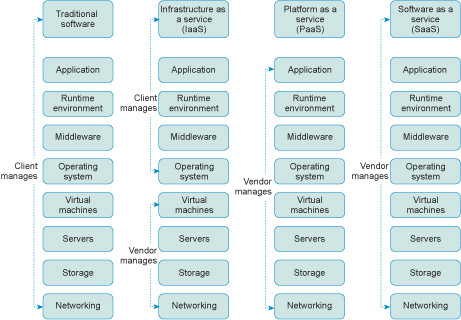Software as a Service (SaaS)
NIST (2011) defines SaaS as:
The capability provided to the consumer is to use the provider’s applications running on a cloud infrastructure. The applications are accessible from various client devices through either a thin client interface, such as a web browser (e.g. web-based email), or a program interface. The consumer does not manage or control the underlying cloud infrastructure including network, servers, operating systems, storage, or even individual application capabilities, with the possible exception of limited user-specific application configuration settings.
With SaaS, a service provider licenses an application to customers either as a service on demand, through a subscription, as a ‘pay-as-you-go’ model, or (increasingly) at no charge when there is opportunity to generate revenue from streams other than from the user, such as from advertisements. SaaS is a rapidly growing market and it is expected that SaaS will soon become commonplace within most organisations.
Advantages of SaaS include:
- the provision of software that would be normally installed on users’ computers (e.g. Microsoft Office) as web applications
- users are not required to implement software upgrades and patches
- the provider can provide scalable web applications using a multi-tiered architecture, implemented on a high-performance infrastructure
- the entire application and hosting infrastructure is the responsibility of the service provider (Figure 4).
With SaaS a significant amount of the processing occurs on service providers’ computers and not on the service consumers’ computers.
There are numerous examples of SaaS available, many based on subscription fees like Netflix and DropBox. Organisations can also use the SaaS model to provide email, word processing and other ‘office’ tools for their employees. A recent trend is for application developers to convert from stand-alone applications to a web-based SaaS delivery model. For example, Microsoft Office 365 is a group of software and service subscriptions which together provide access to Microsoft Office applications and cloud storage services to subscribers. The SaaS model gives the developer greater control since they deploy to a known environment in the cloud rather than distributing thousands of copies to individual users.

